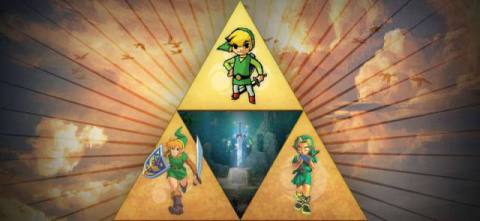
The Legend of Zelda franchise is among the most revered in gaming. Year after year, generation after generation, Nintendo’s crack team of developers release consistently great entries that are almost always Game of the Year contenders. With the latest entry in the series, Breath of the Wild, behind us, we decided it was time to re-examine our ranking of the Zelda games and figure out where the latest entry belongs.
Editor’s note: With the Zelda franchise celebrating its 35th anniversary today, we wanted to re-surface this article from a few years ago. Check out our rankings and let us know your thoughts in the comments!
For the purpose of remaining focused on the core entries of The Legend of Zelda franchise, several spin-offs and obscure titles are omitted. Titles like Hyrule Warriors, Link’s Crossbow Training, and the CD-i games are left off. Even with those missing, we still have nearly 20 games where Link battles the forces of evil to save Zelda, Hyrule, or whatever equivalent exists in that respective game.
Despite the large number of releases over the course of more than three decades, the Zelda franchise has yet to strike out. Even the lowest ranked games on this list are worth playing. Because of this, the order of this list was highly contested from top to bottom.
19

Tri Force Heroes
As a game that encouraged players to work together to solve fun puzzles and progress through a colorful world, Tri Force Heroes is a fine game. Unfortunately, when stacked against the rest of the core Zelda titles, Tri Force Heroes isn’t up to snuff. The humor and puzzles serve as the highlight, but the forgettable action sequences and repetitive gameplay loop prevent it from standing shoulder-to-shoulder with the other games in Zelda’s storied franchise.
You can read our review of Tri Force Heroes head here.
18

Spirit Tracks
Spirit Tracks stands out as a different take on the series that delivered inconsistent results. Using touchscreen controls, players guide Link as he travels by train from location to location. The dungeons and combat are generally improvements over the previous Zelda game on DS, Phantom Hourglass, but by having Link ride the Spirit Tracks in the overworld, the game removes one of the best parts of the series: the exploration. When combined with an inconsistent quality of level design, this makes it one of the lesser entries in the series.
You can read our review of Spirit Tracks head here.
17
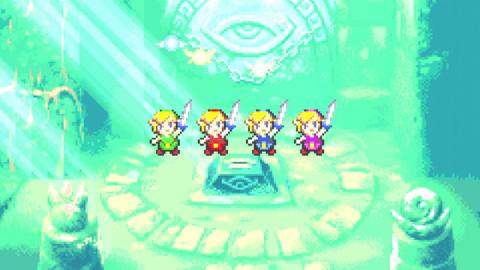
Four Swords
Taking several cues from A Link to the Past, Four Swords delivers strong gameplay, but the multiplayer focus made it difficult to play due to the hoops to jump through to connect four Game Boy Advance systems. In addition, the randomized dungeons sometimes led to poorly conceived designs. To make it even more of an uphill battle, Four Swords was packaged with the Game Boy Advance version of A Link to the Past, putting it in direct comparison with that beloved entry. Despite this, Four Swords is a strong entry point for the series, possessing surprising depth and fun multiplayer. For those who want to play it now, the Anniversary Edition added a single-player mode and additional content.
16

Four Swords Adventures
Much like its Game Boy Advance counterpart, Four Swords Adventures places the emphasis on multiplayer. Some aspects of Four Swords on Game Boy Advance were refined for this release, including hand-crafted dungeons rather than randomized levels and better graphics that took certain aspects of Wind Waker’s cel-shading and combined them with the A Link to the Past-inspired visuals from the original Four Swords title. The multiplayer was overly complicated to take part in, however, as each player needed to have a separate Game Boy Advance system connected to the GameCube to participate.
You can watch us play the game on a recent episode of Replay here.
15
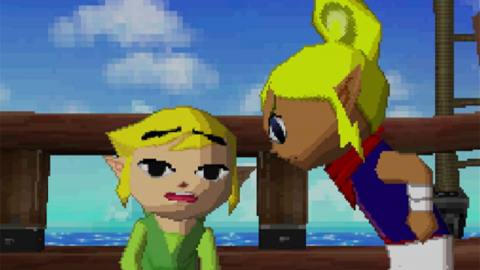
Phantom Hourglass
The touch controls turned many off to Phantom Hourglass when it released in 2007. Using the stylus to control every aspect of Link was often written off as overthinking the tried-and-true formula, but once you acclimated to the new take, you were able to see the good sides of Zelda’s DS debut. The game serves as a sequel to GameCube’s Wind Waker, and the design conventions shine through in similar ways as they did in that game. In addition, the unique control scheme delivered fun encounters and fresh takes on familiar themes.
You can read why Zelda series producer Eiji Aonuma considers it his favorite entry here.
14
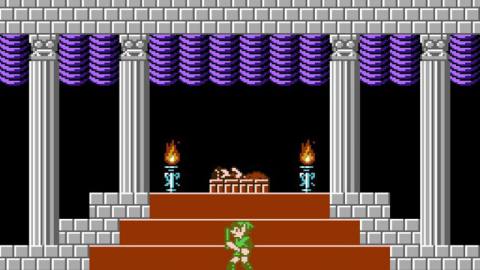
Zelda II: Adventure of Link
After the original Legend of Zelda game captured players’ imaginations through stellar exploration and great top-down combat, the dramatic change in direction that took place with Zelda II: Adventure of Link was a shock to the system. While some of the side-scrolling areas were enjoyable, the overworld navigation was not nearly as fun or rewarding as its counterpart in the original game. Still, those who braved the maddening difficulty found a uniquely engaging experience that put some good ideas to use.
To read more about the history of Zelda II, with quotes from Shigeru Miyamoto about its development, head here.
13

Oracle of Seasons
Oracle of Seasons launched alongside Oracle of Ages in 2001, but the games were much different than other simultaneously released games like Pokémon. The two games possessed different dungeons and different focuses; Oracle of Seasons shined the spotlight on the action side of Zelda. Unfortunately, the 2D action has never been one of the highlights of the series. While it’s fun to slash your way through enemies and rely on your animal companions for their abilities, the true satisfaction of the Zelda series comes with puzzles, something Oracle of Ages had more of a focus on.
12

Skyward Sword
Skyward Sword featured some of the most well-designed dungeons the series has ever seen, as well as a compelling story that, according to the official timeline, predates all other entries in the series. Unfortunately, the mandatory motion controls were a major turn-off for many, even though the Wii Motion Plus accessory made substantial improvements over the motion controls of Twilight Princess. On top of that, despite the bright color palette, the world was not as vibrant to explore as other 3D Zelda games, and the game suffered several pacing issues thanks to sidekick Fi, who rarely gave the player a chance to figure out what to do next on their own.
To read our review of Skyward Sword, head here.
11

The Minish Cap
Link’s inaugural Game Boy Advance adventure isn’t as long as most of the other games on this list, but The Minish Cap still gave players strong, classic Zelda action with creative dungeons, as well as new kinstones and figurines that add interesting quests for completionists. The dungeons remain some of the best in any 2D Zelda game, and the visual style is endearing today as it was impressive on the Game Boy Advance over a decade ago.
10

Oracle of Ages
Much like Oracle of Seasons, Oracle of Ages takes a similar adventure and flavors it with one of the mainstay elements of the Zelda franchise. With Oracle of Ages, the focus is on puzzles and clever dungeon design. That doesn’t mean you don’t get some fun action sequences on top of those strong puzzles. In addition, Oracle of Ages’ multiple-era mechanic was superior to Oracle of Seasons’ seasonal-shift mechanic, making it the better of the two simultaneous Game Boy Color releases.
9

Link’s Awakening
Link’s Awakening is more compact than other games in the series, but it more than makes up for it with strong exploration, excellent level design, fun boss fights, and quirky elements that make the experience memorable. Perfectly fusing silly side-quests with darker, more serious moments, Link’s Awakening is an important entry for setting the tone of the rest of the Zelda franchise. It stands out as one of the greatest titles to ever grace the Game Boy, and it’s easily playable today via the upgraded DX version which added color and an extra dungeon to play through. A full remake of the game is also planned for release on Switch later this year.
For more on the development of Link’s Awakening with quotes from its director, Takashi Tezuka, head here.
8

A Link Between Worlds
When Nintendo announced it was working on a direct sequel to A Link to the Past, it set itself up for failure. Following up a game like that is no easy task, but somehow, Nintendo delivered an outstanding entry that followed in the footsteps of one of the most beloved games of all time, while still evolving the mechanics in meaningful ways. The superb world carried over from A Link to the Past, making exploration enticing, and the improved combat and traversal make it a thoroughly more accessible option for a more modern audience.
For our review of A Link Between Worlds, head here.
7
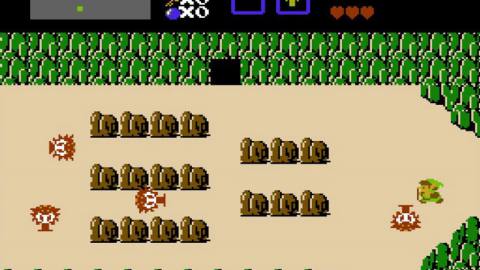
The Legend of Zelda
The game that started it all is about as important as video games come. The Legend of Zelda perfectly blended combat, exploration, puzzle solving, and collection elements in ways never before seen in a video game. It hasn’t aged particularly well, but it remains the blueprint for every game on this list, and a huge chunk of other games within the genre as a whole. The Legend of Zelda did more than create lifelong gamers at a critical time in the industry; it expanded the video game world in ways few other games have.
6

Twilight Princess
After fans were divided on the direction of Wind Waker, Nintendo delivered the dark, gritty, adult version of Zelda many clamored for. Twilight Princess casts Link into a desperate version of Hyrule that is being absorbed by the Twilight Realm. Even Link is affected, as he is able to transform into Wolf Link and enter the alternate dimension. This mechanic is central to not only the story, but the advancement through the dungeons. The clever way the back-and-forth gameplay forces players to think outside of the box, as well as the unconventional design many of the game’s areas mean that Twilight Princess delivers arguably the best dungeons in series history – no small feat when you look at the other games on this list. If you’re looking to play this game now, the HD version on Wii U (pictured) is the way to go.
To read our thoughts on the Wii U re-release of Twilight Princess, head here.
5
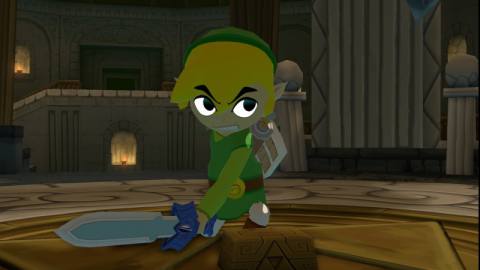
The Wind Waker
When it debuted, the cute, cel-shaded graphics of The Wind Waker were as divisive as any single element in gaming can be. However, as time has passed, most have come around on the visuals and learned to appreciate the sheer brilliance and character contained in the design of Wind Waker. While many still wish the greater navigation elements didn’t confine you to a small boat, nearly all agree on how unique and clever the game is. In addition, it features arguably the best 3D combat of the series, as well as maybe the most exciting final boss encounter of the entire franchise; the last fight against Ganondorf gives players the ability to take part in the perfect David-vs-Goliath moment.
To read our review of the Wii U HD re-release of Wind Waker, head here.
4
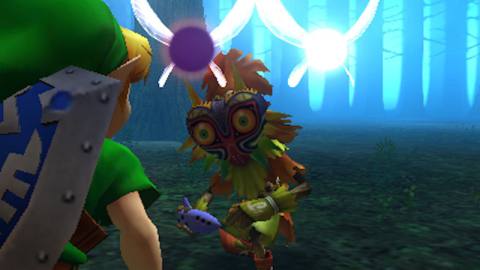
Majora’s Mask
As the follow up to the more straightforward Ocarina of Time, Majora’s Mask was a hard sell for many. Perhaps the most unorthodox and unique entry of the entire core series, Majora’s Mask takes the series in some of the most interesting directions we’ve ever seen. It uses the engine, assets, and core controls of Ocarina of Time, but the comparisons don’t carry much further than that. The timing-based system gives players reason to watch the clock like a hawk while trying to complete missions to find someone and save Termina from an impending moon-based doomsday. It’s dark, it’s peculiar, but most importantly, it’s brilliant. While the original N64 version was somewhat of an exclusive experience thanks to its Expansion Pak requirement, the game was remastered for 3DS in 2015.
To read our review of Majora’s Mask, head here. To read our review of the 3DS remake, head here.
3
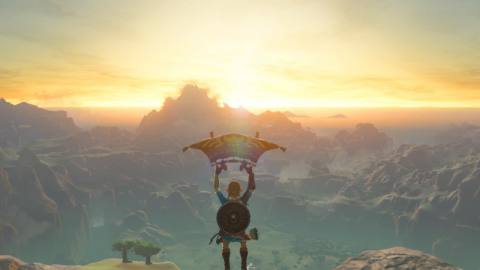
Breath of the Wild
Skyward Sword’s reception was overall positive, but there was no denying it lacked the explorative exuberance normally associated with the series, and Zelda’s creators took note. For Breath of the Wild, Nintendo re-examined everything about Zelda, from its item distribution, dungeons, weapons, and even how it told its story to deliver something wholly unlike the Zeldas that came before it – and the results were phenomenal. Exploring Breath of the Wild’s Hyrule is a joy and it’s already a classic only a few years after its debut, but it’s difficult to compete with the long-term legacy of the games that took the next two spots on this list.
To read our review of Breath of the Wild, head here.
2

Ocarina of Time
Similar to how the original Legend of Zelda blazed trails for the 2D action adventure genre, Ocarina of Time was a true innovator in the 3D space. Hyrule was brought to life like never before in a beautiful, expansive 3D space. The new 3D design gave the developers new ways to challenge players with exploration, puzzles, and dungeons, but perhaps the biggest accomplishment was how amazing the controls were for Nintendo’s first attempt at a 3D Zelda game (aided greatly by the innovative Z-Targeting system). The feeling of walking out into Hyrule Field for the first time and exploring every corner was a revelation in 1998, and most parts of the adventure still hold up to this day. The soundtrack by Koji Kondo remains one of gaming’s musical masterpieces, and the contrast between Young Link and Adult Link in the two very different eras was mind-blowing. When you look at the most important and influential video games to ever release, Ocarina of Time must always enter the conversation.
To read our review of the 3DS remake of Ocarina of Time, head here.
1
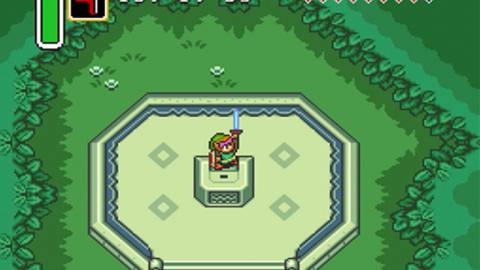
A Link to the Past
Few games possess sequences that can be described as ingenious. Every so often, modern games release with a level that blows you away with its brilliant design. With The Legend of Zelda: A Link to the Past, nearly every dungeon is layered with genius. You would be hard-pressed to find a game with as consistently brilliant design as A Link to the Past. After Zelda II: The Adventure of Link deviated from the formula laid out by the original Legend of Zelda, A Link to the Past not only acted as the series’ return-to-form, but as the genre’s masterpiece.
The game improved on every aspect of the original Legend of Zelda, greatly expanding the scope and adding a new Dark World element that set the template for many future entries in the series. A Link to the Past also added to Link’s arsenal with a massive collection of exciting and effective items to help in his fight against Ganon. To this day, the visuals are a treat to look at, the dungeons are a thrilling challenge to work through, and the world is as engrossing as we’ve seen. A Link to the Past isn’t just the greatest Zelda game, it has withstood the test of time to remain one of the finest video games ever created.
If you want to read more of our rankings of game series, check out our”>http://www.gameinformer.com/b/features/archive/2016/03/10/best-super-ma… ranking of the Super Mario series and our”>http://www.gameinformer.com/b/features/archive/2015/12/04/ranking-the-e… ranking of the Assassin’s Creed series.
